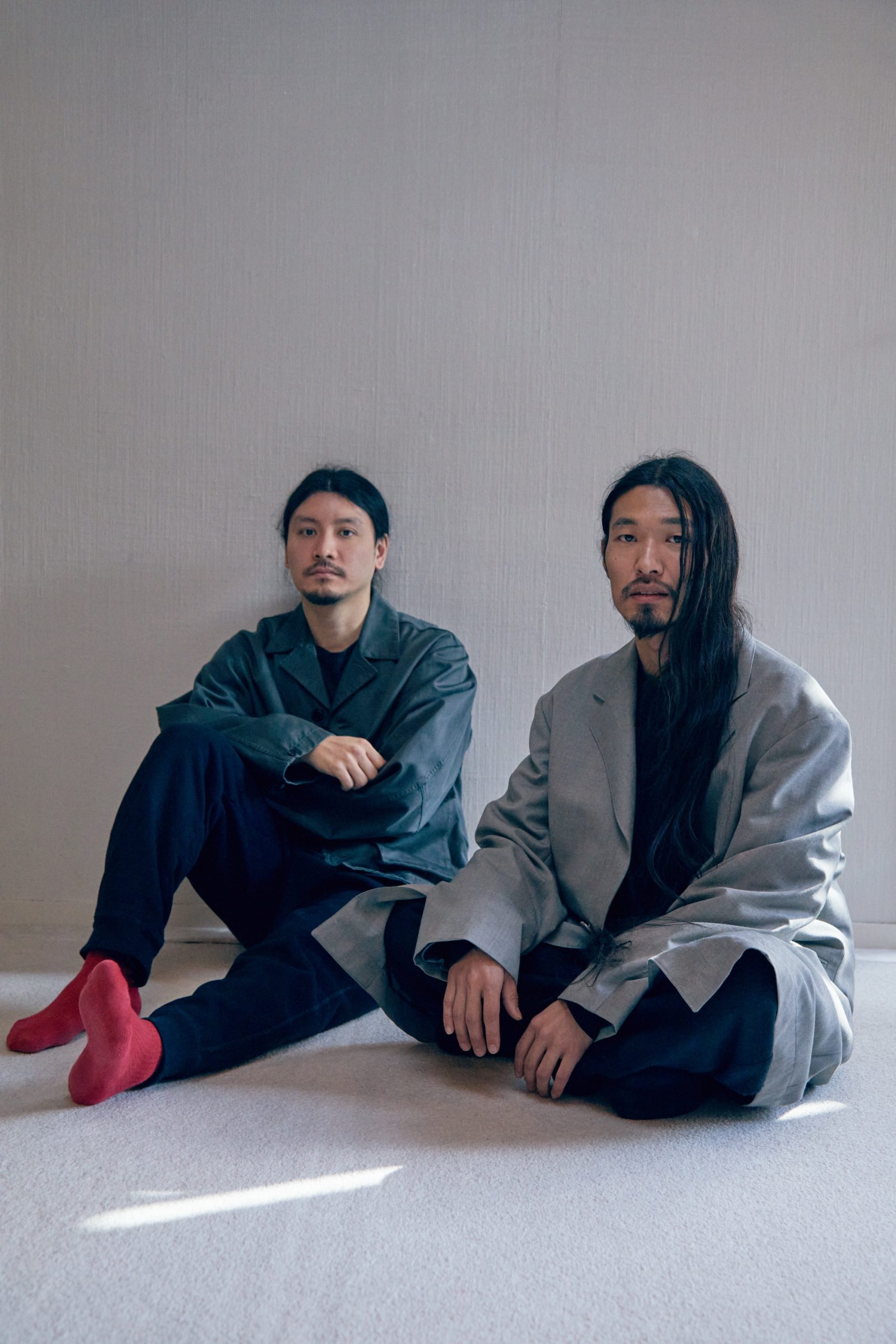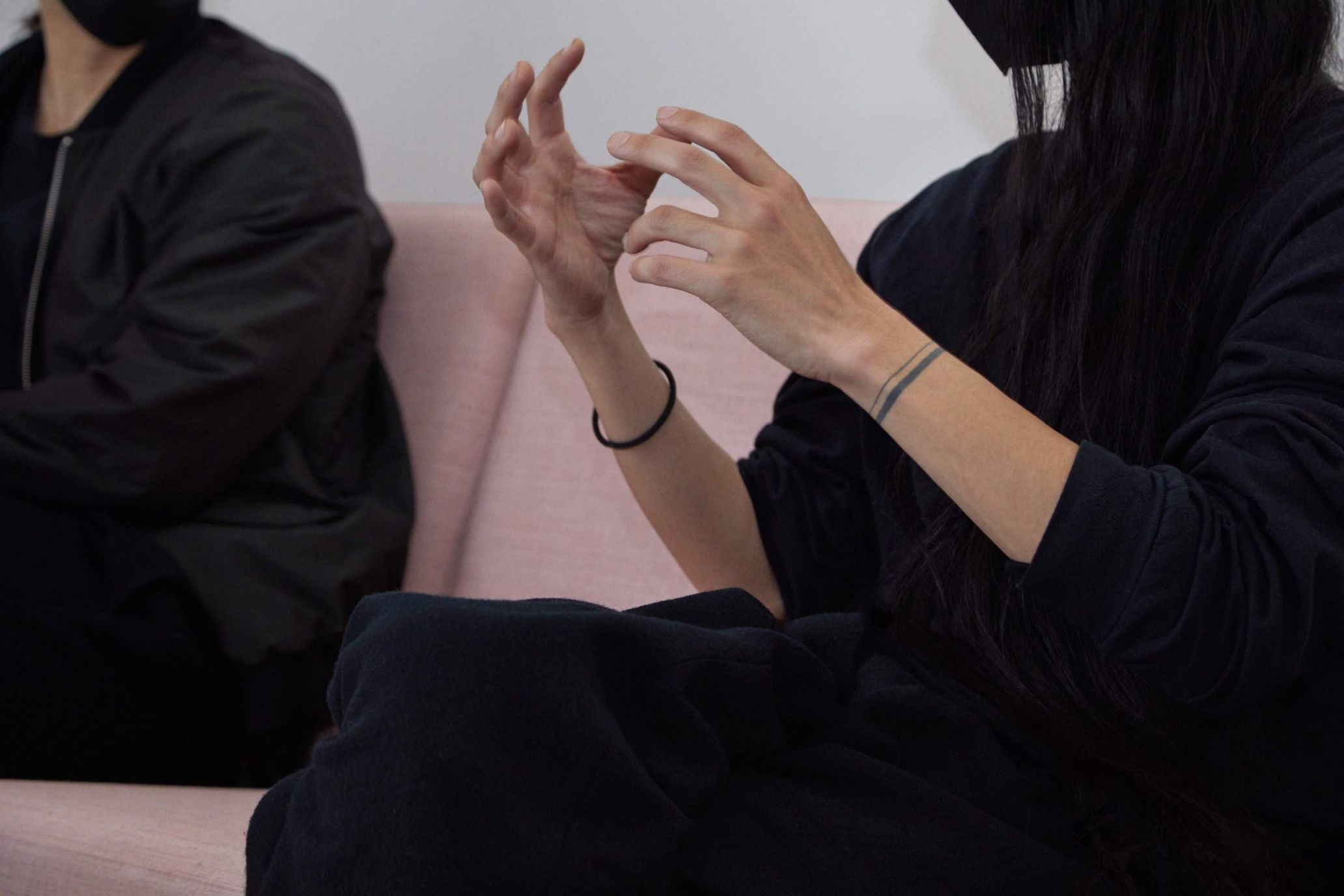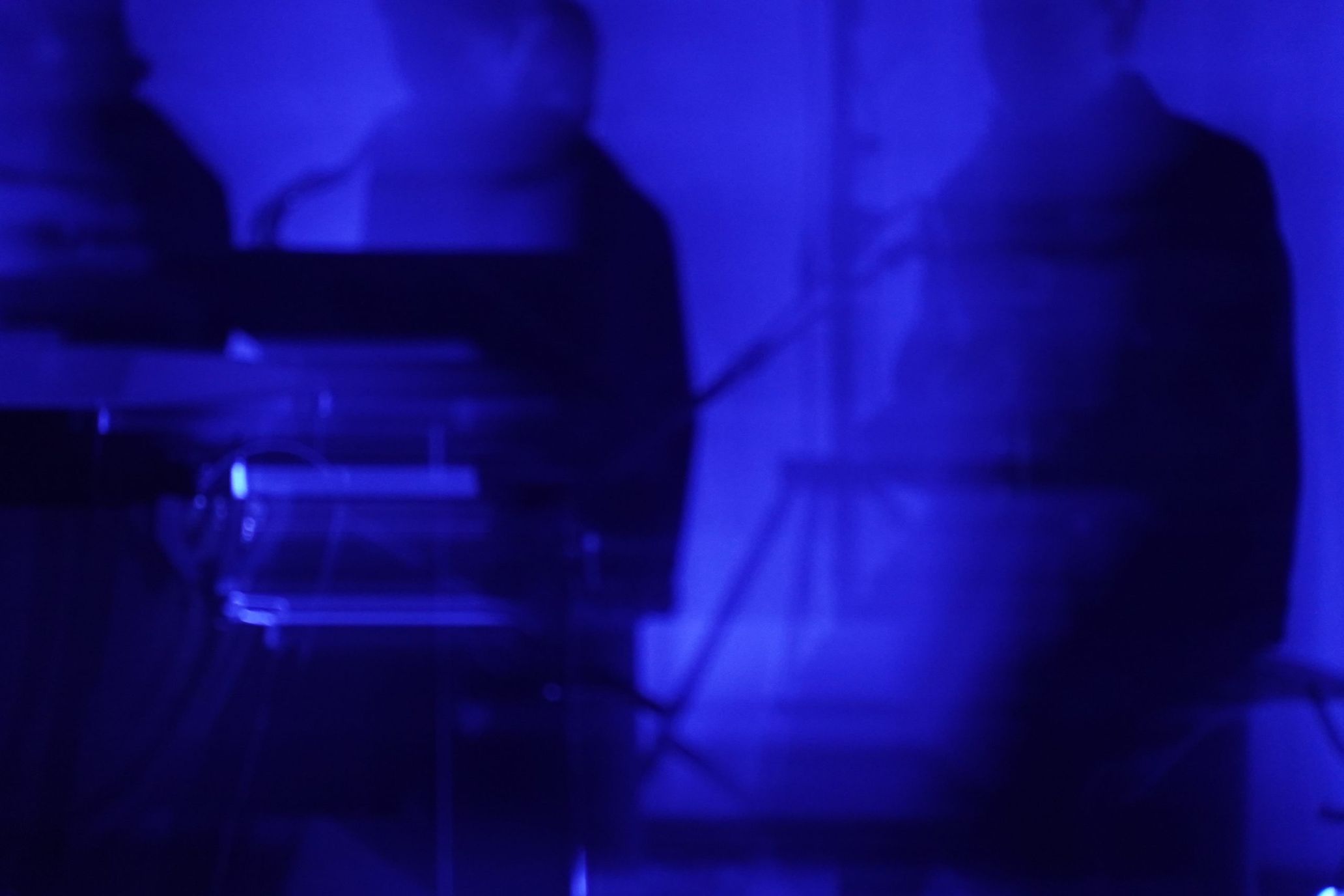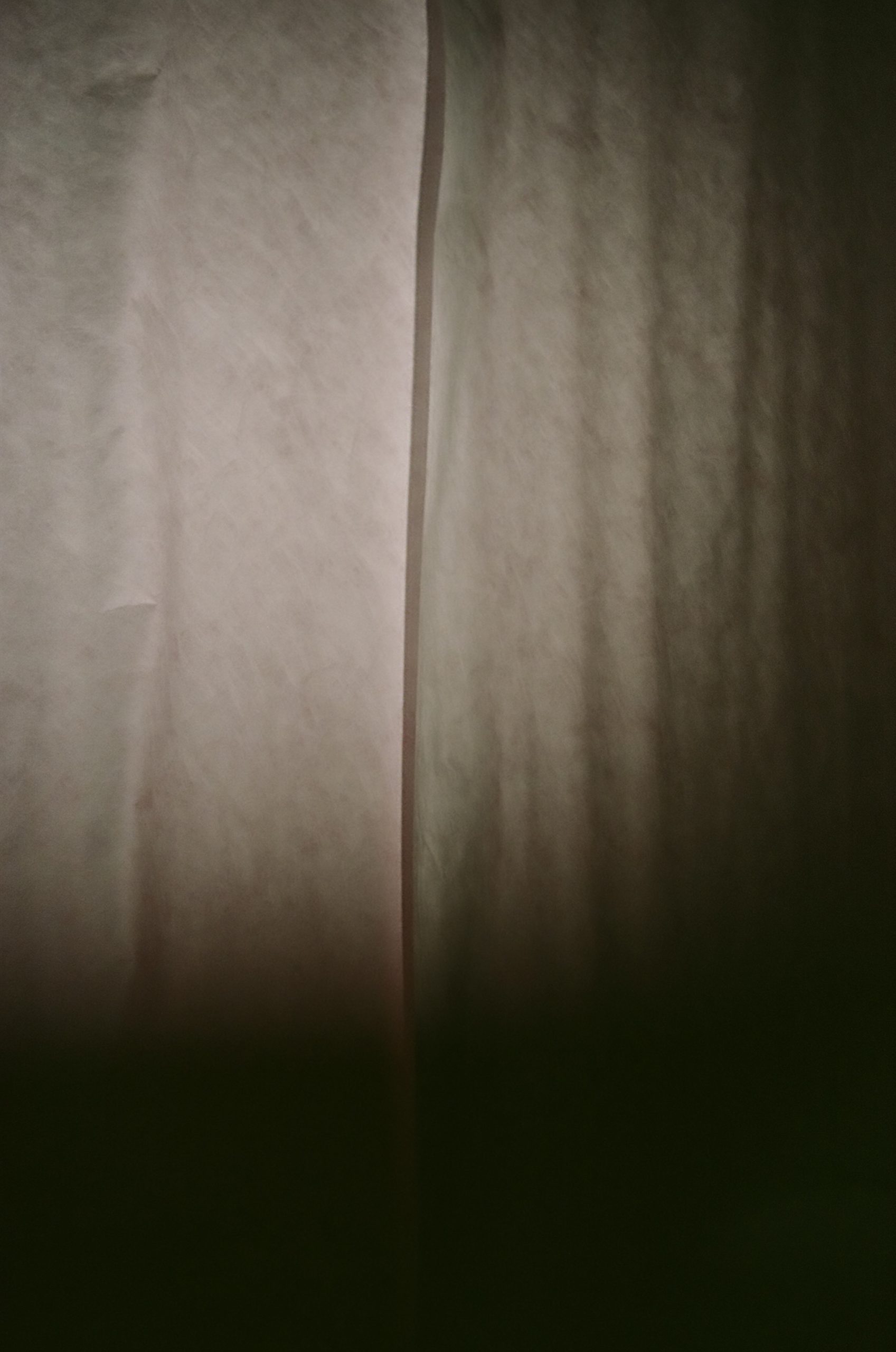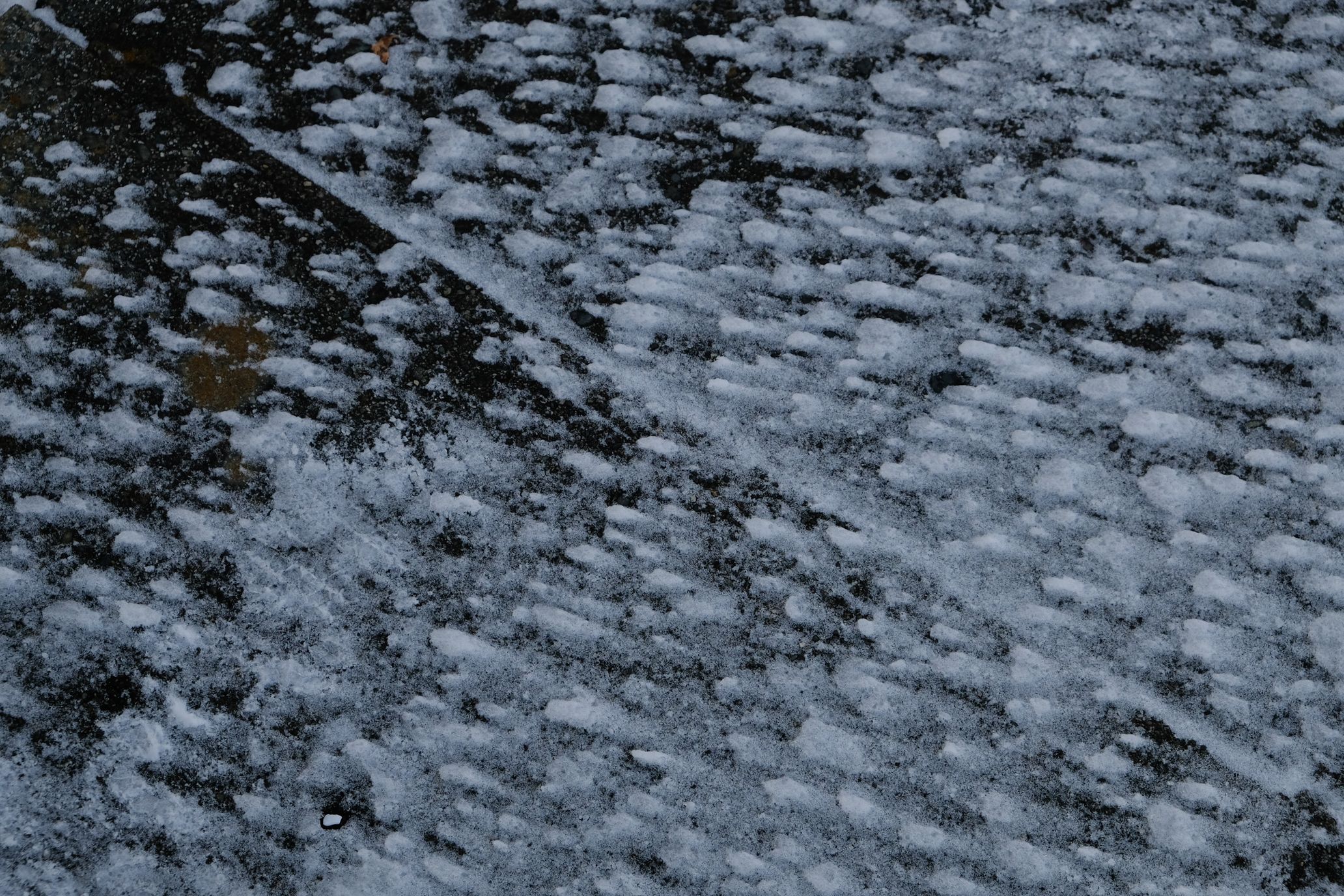Do you know Yoshi Wada, one of the pioneers of drone music who passed away last May? He moved to New York City, USA, in 1967, and by curious coincidence became involved with the members of Fluxus, while developing his own unique musical career. Inspired by contemporary classical music composer La Monte Young, North Indian classical vocalist Pandit Pran Nath, and other talents, he pioneered the realm of drone music. His activities, such as the development of his original musical instruments, the utilization of unique acoustic spaces, and the creation of sound installations, easily transcended boundaries of existing genres such as music and art, and are still filled with an inexhaustible appeal.
Although Yoshi Wada had long been unknown here in Japan, since the late 2000s, M Records and Omega Point had collaborated to reissue and release Yoshi Wada’s albums for the first time. This led to a reevaluation of his musical practice and attracted the attention of the next generation of musicians. Among them are musician/composer Koshiro Hino and self-made pipe organist/sound artist Yosuke Fujita (FUJI|||||||||||TA), who both profess to be influenced by Yoshi Wada. Last December, these two collaborated for the first time to hold a tribute show “INTERDIFFUSION A tribute to Yoshi Wada” with an ensemble consisting of a total of 10 members.
In response to this event, TOKION held a special conversation about Yoshi Wada between Koshiro Hino and FUJI|||||||||||TA, who were central figures in the tribute live. In the first part of the conversation, we asked them about how they first encountered the music of Yoshi Wada, their favorite albums, the significance of being non-academic artist, and the appeal of drone music, which is characterized by “one note that just goes on”.
Photography RiE Amano
Meeting Yoshi Wada’s works through M Records & Omega Point
–How did you two start listening to Yoshi Wada’s music?
Koshiro Hino: I first listened to the album “Earth Horns with Electronic Drone,” which was jointly released by M Records and Omega Point in 2009. I had been checking out M Records’ releases before that, so I came to know him through the reissue/first-time recording series of Yoshi Wada’s works.
FUJI|||||||||||TA (Fujita): I got to know of him around the same time. This increase in his visibility is due in large part to the efforts of M Records and Omega Point. At the time, my own pipe organ was in the planning stages, and although I had an image of it in my mind, I was hesitant about whether to actually build it. Then I bought “The Appointed Cloud” (2008), and when I looked at the cover and the photos in the liner notes, his instruments in the images were very similar to the image of my own pipe organ that I had in my head. Furthermore, when I listened to it, I found that the sound was very similar too, which inspired me to try to build my own pipe organ.
–What was your impression when you first listened to his music?
Hino: I was instantly captivated when I listened to it. Until then, I had been working on the so-called “noise/improvisation” sound, and on avant-garde improvisational session but I gradually grew tired of them. And I came across Yoshi Wada’s music when I started playing minimal/drone music myself, which made me thought vividly, “There is such an approach!” I didn’t know what exactly it was, but it felt good. It was one of the reasons for me to enter the world of drones, which I had not yet clearly grasped at the time.
Fujita: I originally liked Steve Reich and Terry Riley, and at first I listened to Yoshi Wada’s music as one of that kind of minimal music. But what impressed me even more was the fact that he is a person who makes his own pipe-shaped instruments. And if I had not met Yoshi Wada’s works, I might not have made my own pipe organ. He was such a decisive influence on my musical career.
–Did your impression of Yoshi Wada’s music change as you listened to his albums over and over again?
Fujita: Actually, my impression hasn’t changed much, and even now, more than 10 years later, I still perceive it in the same way as I did when I listened to it for the first time.
Hino: No matter how many times I listen to his music my initial impression did not change. However, I started listening to it analytically at some point. Especially in terms of “The Appointed Cloud,” I vaguely thought it was “something amazing even though I didn’t really understand it,” and I kept wondering why I thought so. So when I composed for an orchestral project called “Virginal Variations” in 2016, I decided to incorporate Yoshi Wada’s music as one reference, and I analyzed “The Appointed Cloud”. After examining various factors including the instrumentation, and time structure, it turned out that the sound switches just about every minute, for example. So the resolution of listening experiences of that album became higher and higher. The impression remains the same, but what I hear became clearer and clearer. I began to listen to the album as if I were looking at it through a microscope, so to speak. The project “GEIST,” which I am currently working on, has also been inspired by and conceived from the findings of the analysis.
Favorite Albums of Koshiro Hino and FUJI|||||||||||TA
–There have been a total of five albums released under the name Yoshi Wada. Which is your most favorite album when you look back on them again now?
Fujita: I like “Off the Wall” (1985/2008) released on FMP the best. I first listened to it right after “The Appointed Cloud” and still find it fascinating. It’s not a polished album because the recording quality isn’t great and how the sound ends is quite rough. But that’s what makes it so interesting, as if the form of expression has been stripped down to the barest essentials. It was just like an embodiment of Yoshi Wada’s experimental spirit being just popped out.
Hino: Yeah, you are right. Basically, it is rough and primitive in a sense and that’s what I like about it. But compared to “Earth Horns with Electronic Drone,” which is characterized by the endless drones, “Off the Wall” seemed to be made to fit on a record. So I like how it is unexpectedly well composed.
Fujita: Indeed. Which album is your favorite?
Hino: For me, my favorite album may change depending on the time. My first gateway to his music was “Earth Horns with Electronic Drone,” but the one that made the biggest impact on me was still “The Appointed Cloud.” But I kept listening to it analytically, trying to figure out why it had such an impact on me, and part of me can no longer enjoy it purely as music. It is difficult to get the same kind of impact unless you forget everything you have analyzed. Also, I have to admit that I didn’t like “Singing in Unison” (2012) very much at first, but now I think it’s very good. I am an adjunct instructor at Kyushu University, where I teach a composition class, and in the class we used a reverberation room, a space that generates a very long reverberation. I had 15 students stand in a circle, turned off the lights, and let them play the music with simple rules at the signal of lights. In this class, I decided to introduce Yoshi Wada’s “Singing in Unison” as a reference for a vocal music piece. So I listened to the music again while looking at the score, which was very good. It was a new angle of listening that led me to new discoveries.
–As with all of his albums, one of characteristics of Yoshi Wada’s music is the juxtaposition of two opposing elements: acoustic and electronic sounds, voices and instruments, and physical and mechanical. Have you ever found such an approach appealing?
Hino: When different things like the automated and live performances in “The Appointed Cloud” overlap, it creates a mystery that cannot be understood just by listening to the sound. That is what attracts me. In the beginning, I listened to the music without distinguishing between these two elements. In terms of “Earth Horns with Electronic Drone,” I listened to it without separating the oscillators and the pipe horns at first, and although I didn’t really understand what was going on, I was attracted to it anyway. In retrospect, one of the reasons for such enigmatic appeal turned out to be the approach of juxtaposing the two elements.
Fujita: My own expression is both organic and electronic, so in that sense I share some commonalities with Yoshi Wada in my approach, but as to why he juxtaposed two opposing elements, I think it was inevitable consequence. Especially since what I can do with my self-made instruments is quite limited, I feel compelled to incorporate conflicting and dissimilar elements impulsively. Of course, the work itself is possible in the form of an installation, but if I were to develop the sound from that point, I would be forced to incorporate elements that are different from those of an installation. For example, if we juxtapose a bagpipe performance by a human being, we can create a degree of freedom that is not possible with the automatic performance of an installation.
Sympathy toward Yoshi Wada’s non-academic attitude
–Did you discover anything new about Yoshi Wada’s music through this “INTERDIFFUSION” tribute?
Hino: Since I listened to his music quite analytically when I did “Virginal Variations” project, I noticed and discovered more about the sound then. However, Yusuke Nakano, a person who organized this tribute project, gathered a lot of information on Yoshi Wada, and among them was a video of his installation. When I saw it, I was very surprised.
Fujita: Yeah. I was also surprised to find how the sound was created.
Hino: That was exactly the same as what I am doing now with “GEIST! Haha. I realized that the essence of Yoshi Wada is not only in the sound, but also in the visual/spatial elements.
Fujita: In that sense, my impression of Yoshi Wada may have changed a little. My first impression was that he was more of a music-oriented artist. However, he also placeed great importance on presenting his works in the form of installations, as he did with “The Appointed Cloud. I learned this again during the creation process of “INTERDIFFUSION” this time.
Hino: The reason why any recordings after “The Appointed Cloud” has not been released is because he was shifting his main focus onto installations rather than pure form of music.
I feel the primitive quality that was possible because of that era. He has done things that we would hesitate to do now. The way the automatic performance was presented gives me a sense of purity and looks as if the music was created instinctively and presented as it was.
Fujita: I think so too. Now, there are various installations taking place all over the world now, but there are already histories and contexts that have been formed. So when a new work is created afterwards, the artist’s purity is often diluted by referring to such various elements including histories and contexts.
Hino: I suppose he got to such a form of expression only though continued work in the non-academic field. That is a point with which I can really sympathize. Actually, at first I thought Yoshi Wada was more of an academic artist. I was like, “This is the drone of so-called contemporary classical music!” But as I learned more about his background, I realized that he was a non-academic artist. I think that academic artists tend to have a well-defined methodology, or they often start with a framework and then work out the details, but such a method does not always produce interesting sounds, even if it is a new approach. Yoshi Wada, on the contrary, tried various things without caring about the outer frame, and kept pursuing what he felt was essential. I think such a non-academic attitude was trustworthy, and that is why he was able to capture the hearts of listeners even if he didn’t have a substantial background of contemporary classical music.
Fujita: I think the creation of self-made instruments was also a crystallization of such a non-academic attitude. That is why I am very sympathetic to him. It is exactly the DIY spirit. Yoshi Wada worked as a plumber after coming to the U.S., didn’t he? That says, rather than preparing pipes in order to make his own instruments, he first of all had pipes as something available at hand. I think he made use of the tools he had at hand and the knowledge he gained from his work to create his own instruments. I have been trying to realize my vision by using the materials that I can buy at hardware store. Of course, there are many times when I fail, but unlike the sophisticated instruments that are already available, if I can do it successfully, I can create an instrument that compels the soul just by sounding a single note.
Interesting features of the drone that highlight the listener’s awareness
–The main characteristic of drone music, including the music of Yoshi Wada, is that “one note goes on endlessly.” For listeners who are not familiar with drone music, this may seem dull and boring, but what do you feel is the appeal of this kind of drone music?
Fujita: I don’t think that “one note going on endlessly” in itself is attractive, and such a feature itself would naturally bore people. Rather, I think there is value in the experience of something like passing through a door over time, as a result of the endless succession of simple elements. One approach to bringing about such an experience is drone, and I believe that this is the same for minimal music that repeats same phrases and, say, for South American ayahuasca ceremonial music. There is something interesting about accomplishing something with very simple rules, and it can bring the listener into a kind of trance state. I think that is the appeal of drones.
Hino: Yes, that’s right. Also, I think it is important what kind of situation you listen to it in. If it is a live performance, at least when I play, I see it as music for trance, so drone is one methodology for that. But if I just play drone recordings when I’m at home, I can’t get the same trance-like feeling as at a show, and it just functions as background music. Of course, even if you listen to it at home, if you take the time to stay focused on the piece, you can still get a trance experience.
Fujita: It is easier to do it live, isn’t it? In a live performance, there is some kind of sense of compulsion to stay in the moment.
Hino: It was interesting to hear everyone’s impressions after the first rehearsal of “INTERDIFFUSION. Some said, “I felt like I was getting into the details of each instrument and sound, but I also felt as if I was looking at the whole piece from a bird’s eye view. ” So such a shift of awareness can occur in us.
Fujita: I guess you could say that is another feature of drones. There are extremely few musical elements, so it get listener’s awareness in play.
Hino: It could also be said that there is a sense of getting closer and closer to the inner world. Some people have described it as “like dreaming,” and I thought that was very true. Going into the inner consciousness itself was one of our goals through the tribute event. Fujita: Going into the inner consciousness also includes an act of losing concentration, doesn’t it? I think that different people have different things in their consciousness, but for example, at a drone show, while listening to the sound, you may suddenly lose your concentration and start thinking about your daily life or work. After a while, however, you start listening to the sound again. I think drone shows are interesting because they bring about an experience in which the listener’s consciousness moves back and forth between the sounds of the outside world and what is going on inside of him or her. So I think it is interesting that the drone show highlights more and more details of the listener’s consciousness.
Koshiro Hino
Player / composer for goat and bonanzas. As a solo project, he works on a cassette deck collage of electronic music and field recordings under the name of “YPY,” with a focus on a broad range of genres from dance music to avant-garde collage/noise. He also composes and directs “GEIST,” a live performance mixing numerous speakers and performers. He is also the director of “Birdfriend,” a cassette label that releases underground musicians from Japan and abroad, and “Nakid,” a label that releases contemporary/electronic music.
Instagram: @po00oq
FUJI|||||||||||TA
He has been creating intonarumori, sound installations, film music, music for dance works, with a special focus on his solo performances using his own pipe organ and variety of elements including voice and water. In addition to his solo work, he has collaborated with EYƎ (Boredoms) on the stage “Memoriam” and with Fuyuki Yamakawa on the show “Country Gentlemen”. He has also produced film and animation music, and exhibited sound installations in various fields. He released NOISEEM on the London-based label 33-33.
Instagram: @fujilllllllllllta
■INTERDIFFUSION A tribute to Yoshi Wada
Future plans include the release of a film of the tribute concert (May 2022) and a live recording (date to be determined).
Instagram: interdiffusion.yoshiwada
Edit Jun Ashizawa(TOKION)
Translation Shinichiro Sato(TOKION)

